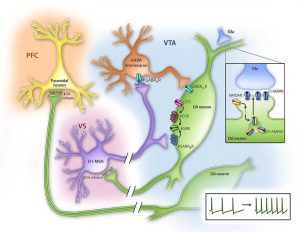
A figure from this study.
Reviews To Read – March 2019.
Cocaine drives persistent changes in synaptic transmission and ventral tegmental area dopamine neuron activity. Francis et al. reviews how these alterations contribute to cocaine addiction and highlight therapeutic avenues for future treatment.
Synaptic and intrinsic plasticity in the ventral tegmental area after chronic cocaine. Journal Article
In: Curr Opin Neurobiol, vol. 54, pp. 66–72, 2019, ISSN: 1873-6882 (Electronic); 0959-4388 (Linking).
